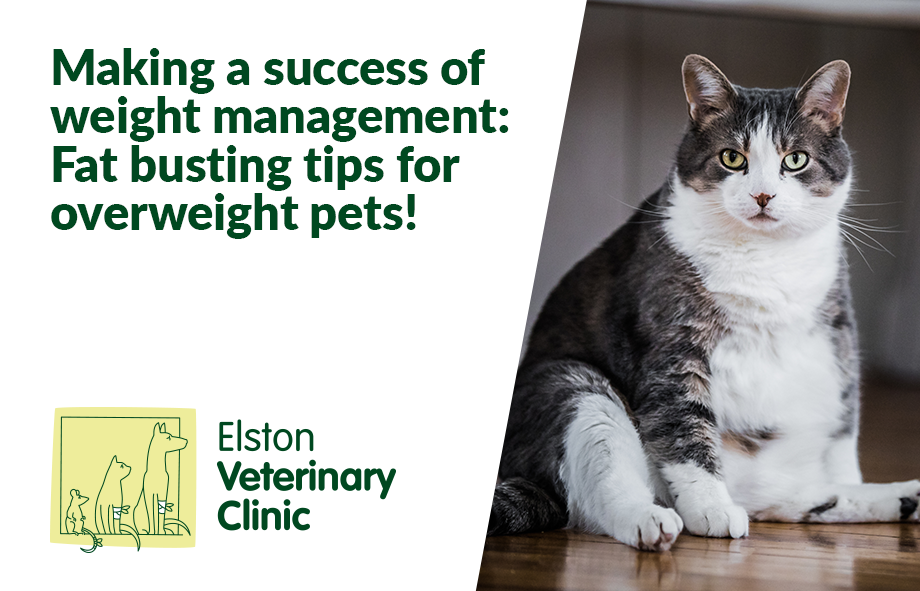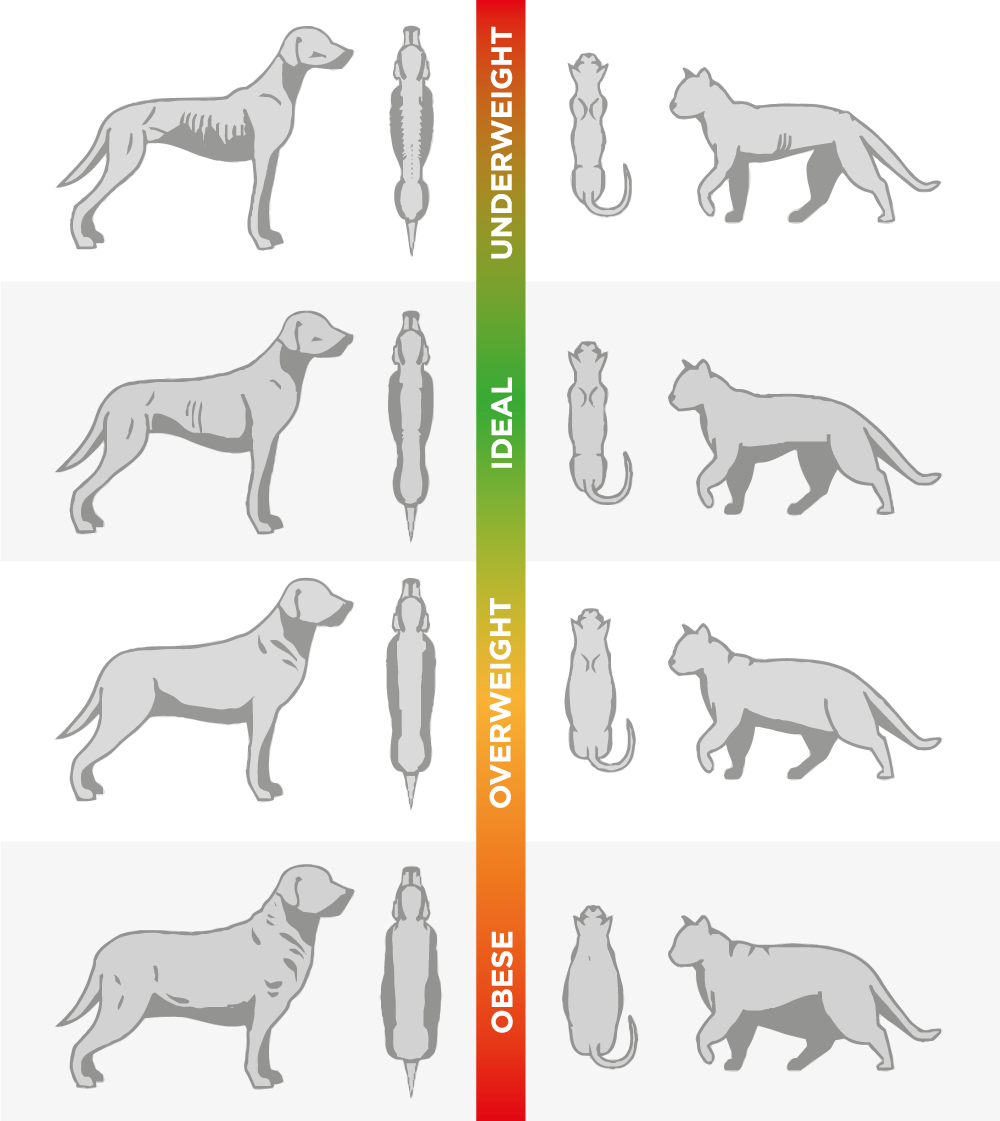
Sadly, pet obesity is on the increase, becoming more common, and is causing many preventable issues for our much-loved cats and dogs.
Pet obesity is a condition where excess body fat has reached the point at which good health is harder to maintain. After an online survey* in 2018, it was estimated that as many as 59% of dogs and 52% of cats worldwide are overweight. It has become such a significant problem that the World Small Animal Veterinary Association has officially classified canine obesity as a disease, which is the same as the classification in humans.
Isn’t a bit of chub just cute? How bad can it be?!
As in humans, lots of problems are associated with pets being overweight including:
- Significantly reduced quality of life
- Medical conditions including diabetes, osteoarthritis, heart disease, high blood pressure, respiratory distress
- Some types of tumors – the abnormal growth of cells forming lumps
So how has this happened?
Generally, a pet is fat because they are eating more calories than they’re burning off.
There are also some medical conditions that can result in weight gain which is why a weight loss journey should ALWAYS start with a checkup with your vet.
We can make sure your pet doesn’t have any underlying issues such as an underactive thyroid, or arthritis causing pain and therefore restricting their exercise.
Interestingly, in the survey mentioned above, just 24% of cat and dog owners described their pet as overweight which suggests that it not being noticed anymore has become part of the problem. This is very understandable, because when you live with a pet day in and day out, it’s not always easy to see if they’re growing in size. This coupled with a large proportion of the pet population getting bigger makes a larger size appear normal.
How do I know if my pet is overweight or just fluffy?
The best thing to do is regularly monitor their weight throughout their life. Each time you visit us we’ll weigh and record the weight of your pet, but if you’d like them weighed in between these visits, just pop in. This is also a great opportunity to give your pet a happy experience at the vets, as they always receive a friendly welcome in the waiting room.
If you are a member of our Healthy Pet Club we include a twice-yearly health assessments, including a weight check, as part of your membership. Find out more here.
To check if your dog is overweight, there are a few things to look for that will give you a good idea:
- Their ribs should be just visible or easily felt under their coat
- You should be able to see a waist from the side, and also from above.
- Your dog shouldn’t have a sagging or rounded belly when viewed from the side.
You can tell if your cat is overweight by using similar visual checks:
- You should be able to see or feel their ribs as well as their spine and hips.
- They should have a visible waist when you look down on them
- There should only be a small amount of belly fat and it shouldn’t be sagging under them

Ok, I have an overweight pet. What steps can I take with diet?
Complete diets – such as good quality biscuits – have increased the nutritional quality of pet food.
Our pets now easily get the nutrients they need, which has eliminated many problems associated with nutritional deficiencies. But, it’s also become very easy to give them the amount of food we think they need, and really easy to keep putting food down if they seem hungry.
Many pet foods come with a cup with a portion size printed on the side. If not, weigh the food using kitchen scales until you get an idea about how much they should have each day, then split that across their meals. Some pet foods will advise you to overfeed your pet, also there are some individuals that differ from the ‘standard’.
To ensure they aren’t consuming more calories than they need, check the pet food packaging, then check with us! Take care with extra treats! For a small dog, one human biscuit can be the additional calorie equivalent of a burger.
How much exercise should pets have?
Dogs should be walked every day. Their exercise needs are based on breed, age, size and general health but your dog should be active (walking or running) for between half an hour to two hours a day. Naturally, active dogs such as hunters or working dogs will need the most exercise and plenty of time off the lead.
Cats usually control their own activities, although indoor cats can be helped to become more active by playing games with them. You can get some great toys for this, and we carry some of these here at Elston Vets. Encourage them to chase after balls, feathers on the end of rods or harmless laser lights that they can follow and dart around the place.
The best approach is to monitor and prevent excessive weight gain throughout their life.
It is so much easier not to gain excessive weight than lose it, and I’m sure (especially this time of year!) many of us are aware of the boredom involved in weight loss.
Proactive monitoring of your pet’s weight and condition throughout their life is the best way to prevent pet obesity and make sure they have a long and happy life. We can initially record their weight at their first vaccinations then regularly after that, enabling us to make any dietary changes as soon as possible.
Concerned about your pet's weight?
To discuss any concerns you may have about the weight of your pet, or to talk to us about calorie controlled diets for your overweight cat or obese dog, call us any time on 01980 621 999
*The survey was conducted online during January and February 2018. The total sample size was 5,309 cat and dog owners who were responsible for their pet’s health and well-being (Brazil 1,068; China 1,036; Russian 1,111; United Kingdom 1,023 and United States 1,071).